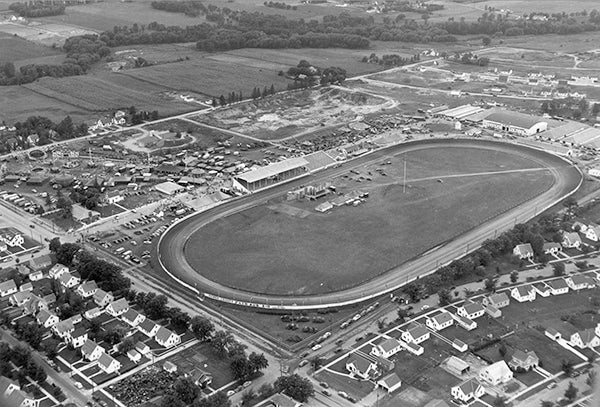The end of a history
Published 7:00 pm Saturday, October 13, 2012
Fairground grandstands set to come down
It saw ostrich races, automobile races, countless demolition derbies, many rodeos and even Jesse “The Body” Ventura singing before he was elected governor.
But the grandstand of the Mower County Fairgrounds has hosted its final show and will be torn or burned down, most likely within the next year.
The county board voted Oct. 9 to demolish the grandstand, and the board is slated to decide Oct. 23 whether a controlled burn will be used to demolish the structure.
Mower County Fair Board President Neal Anderson said it’s bittersweet to see the grandstand come down, but he compared it to the demolition of other fair buildings that have come down to make way for a new structure.
“I suppose to some people it’s sad,” he said. “For others it’s exciting to see something new.”
An eye on history
Construction on the grandstand was completed in 1938 as a $25,000 Public Works Administration project, according to a Dec. 30, 1938, clip from the Austin Daily Herald in the archives of the Mower County Historical Society.
“In its first year it proved a valuable addition to fair facilities,” the clipping read.
The structure was built as part of a large public works project in Austin that topped $1.25 million.
“With the help of federal funds, the city launched what is probably the biggest public works program in history,” a Herald story said.
Other Austin landmarks can trace their lineage to the public works project. The two largest parts of the project were a $763,000 addition to Austin High School and a $352,200 waste disposal plant. Other projects included the $47,450 swimming pool at Horace State Park, the $15,000 bandshell in Community Park, and the $103,000 Lincoln School addition. The Work Progress Administration also funded a $40,000 project to add bleachers, a field house and tennis courts at the high school’s athletic complex.
The grandstand was later damaged in 1961 when high winds or a tornado damaged part of the roof and the structure.
Incarnations of a grandstand
Though this grandstand has been a part of the fair since the 1930s, it has gone through many phases.
Early on, horse races were held on the grounds, and automobile races would become a big part of the grandstand on a large oval track for multiple decades.
In the mid- to late 1980s, the grandstand was based around entertainment, particularly country music, according to retired fair board President Ken Trom.
One of the biggest names to perform at the grandstand was Lori Morgan, according to Trom.
“That was a huge success as far as getting a crowd together,” Trom said. “That filled the grandstand.”
Other big musical acts included Bobby Vee, Tommy Roe, Larry Gatlin and the Gatlin Brothers, John Michael Montgomery, Ventura and his band, and more.
“We had some really good entertainment back in the day,” Trom said.
Many shows boasted positive attendance of the shows, but Trom said the fair board struggled to break even on the events.
“We lost a lot of money on the grandstand shows,” Trom said.
With the Freeborn County Fair a short drive away a week earlier, Trom said many people spent their money to see country music a week earlier at a free grandstand, even though Freeborn County charged admission for the fair.
In the late 1980s or early 1990s, the oval race track was removed, according to Trom. With the fair board struggling to profit off country music, Trom said fair organizers would shift to more low-cost entertainment, like demolition derbies and rodeos.
“We kind of wanted to have a different fair, too,” Trom said, referring to the country music at the grandstand in Freeborn County.
Looking to the future
When the grandstand was condemned in July, it didn’t come as a surprise to the fair board.
“The fair board watched that pretty close for a number of years,” Trom said.
A structural engineer looked at the facility more than a decade ago, and the fair board had been making routine repairs.
“We had to spend quite a bit of money every year to bring it up to code and keep it safe,” Trom said.
But, he said it got to a point where the deterioration was too much.
While it posed challenges at the fair in 2012, Anderson praised the county board for taking action.
“We certainly appreciate their help and forward thinking,” Anderson said.
The county board opted not to repair the structure for economic reasons, stating it wouldn’t be a wise use of funds to repair.
Even though the grandstand is on its way out, Anderson assured it’s not the end of the story.
In fact, some solace can also be found at the Historical Society, where pictures from 1909 show a much smaller set of bleachers at the fairgrounds, and programs predating this grandstand advertise racing programs and performers.
The tradition will again live on, as the fair board and county board are working to have a new structure in place by the 2013 fair.
“It’ll all work out for the best,” Anderson said.
Key dates
1938 — Grandstand is completed, thanks to a $25,000 PWA project, according to a Dec. 30, 1938, Herald article. 1961 — High winds or a tornado damage the grandstand’s roof. 1990 — Around 1990 or the late 1980s, the dirt race track was removed from in front of the grandstand, according to retired fair board President Ken Trom 2012 — The grandstand is condemned, and the county board votes unanimously to demolish the structure.






